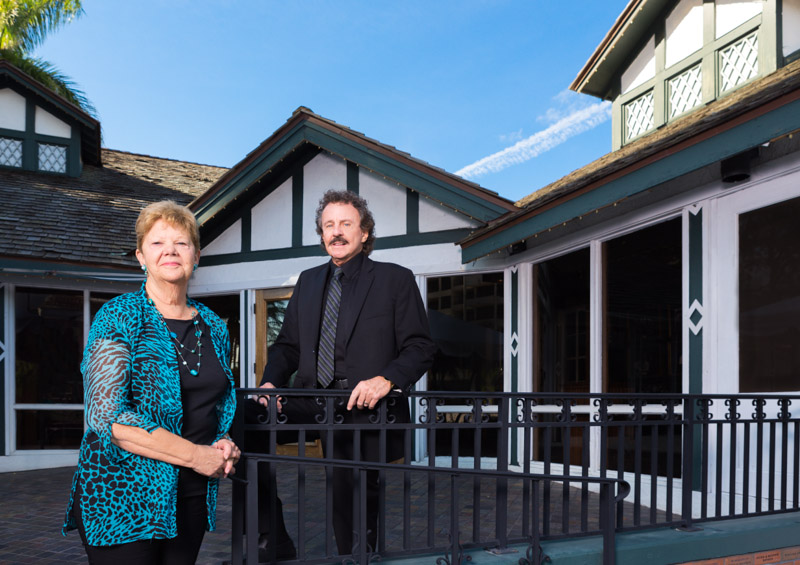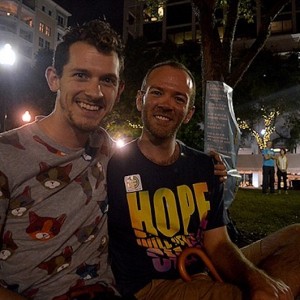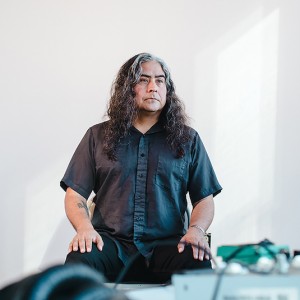“When that building was built, Palm Avenue was a dirt road. What’s now called Cocoanut was called Park Avenue and it was a dirt road. And when I say ‘dirt road,’ I mean it was dirt.”This month marks the 100-year anniversary of the building now known as The Keating Theatre, formerly the clubhouse for the Women’s Club of Sarasota, and Richard Hopkins, artistic director at Florida Studio Theatre, is, like many, looking back on what 100 years has wrought. Long gone are the days of dirt roads in downtown Sarasota and the Woman’s Club no longer stands as the social powerhouse that it once was, but the building remains a repository of local history and monument to hard-fought victories forgotten by all but the few caretakers of our shared past.
Nearly as old as the town itself, the Woman’s Club laid the cornerstone for the clubhouse on New Year’s Day in 1915, less than a year after the city of Sarasota was incorporated and roughly two years after the Woman’s Club formed from the remains of the Town Improvement Society. Comprised of 63 charter members in 1913, the club quickly expanded to over 200 and the building on the corner of Park and Palm became a civic focal point, as well as a rare place where women could be themselves. According to the current president of the Woman’s Club, Judy Snodgrass, her primary predecessor, first president Alice Guenther, immediately set the tone for the next hundred years.
“During her term, she wanted it understood that [the club] would have a civic and philanthropic bent first and social activities second,” says Snodgrass. It’s only fitting that one of the first projects the women would undertake would be to maintain the first Sarasota Library, which they housed in a wing of the clubhouse. “They felt it was important to help educate.”
The second major focus for the burgeoning club was the beautification of the town. Tired of dark dirt roads lined with sand, underbrush and wooden plank sidewalks, the Woman’s Club organized efforts to install more cosmopolitan walkways and lanterns to light the way after dusk. In addition, hundreds of palms and other trees were planted by club members along the beaches and around the city. Making it all the more remarkable, this was accomplished at a time when women couldn’t even vote, much less lord authority over the male-dominated spheres of government and business. When the Women’s Club succeeded, it did so on the backs of its volunteer members and mobilization of the community.
It wasn’t long before the Woman’s Club became a voice in the larger conversations of the time, such as women’s suffrage, healthcare and children’s welfare, including organizing boycotts against businesses that did not support equal education. And when the Great War and World War II came to America, it was the Woman’s Club that helped organize the Red Cross Auxiliary, making bandages and raising money for the troops.
But come 1973, with membership dwindling as the women broke off into separate groups such as the Garden Club, pursuing disparate, focused goals, the historic clubhouse became too much to maintain and the Woman’s Club was looking to sell. In the end, its departure from the corner of Palm and Cocoanut (Park) mirrored its arrival, but left a legacy behind.
However, with the property owned by the realty company Boomhower and slated for demolition to make way for a parking lot, the clubhouse the women had laid the foundation for, much as they had for downtown as we know it today, was in jeopardy. Their saviors would emerge in the form of an heiress and a young theater director.
At the time, a wandering theater company under the direction of artistic director Jon Spelman, Florida Studio Theatre was growing fast and looking for a home. Friends with Marian McKennon, inheritor of the Lavoris Mouthwash fortune and wife of local circus mogul Joe McKennon, Spelman approached her for help and she purchased the building in late 1976 and gave it to FST rent-free. The following year, the building received Historical Site status.
“This building will give them a little breathing space for their next step,” McKennon was quoted as saying in the Sarasota Journal in 1977. “It’s a tiny plateau on the way up.”
Repurposing the ballroom into barely more than 65 seats and a stage, FST had a home. Purchasing the building outright in 1985, FST still faced the monumental challenge of modernizing the building. The electrical system was a vestige of the birth of electricity, all exposed wires and ceramic couplings. Similarly, the plumbing needed updating.
“We started renovating as soon as I got here,” says Hopkins, who joined FST as artistic director in 1980 and took an active role in developing the space. “We’ve taken everything down to the studs, and replaced the studs.”Hopkins and FST looked to old photographs of the building for guidance in the renovation. The wrap-around veranda, eventually enclosed by jalousie windows come the advent of air conditioning, was restored to its original form. In addition, the great sloping cedar-planked prairie-style roof has been carefully, although expensively, maintained. Although the company would grow over the years, adding new stages, buildings and thousands of patrons, FST would never forget where it came from.
“There was a legacy that we were adopting,” says Hopkins. “They were groundbreaking in so many ways and it was a tip of the hat to all the people who worked so hard for so many years building Sarasota.”The extensive renovation process would end in 2003, helped by a generous donation from Ed and Elaine Keating, for whom the building is now named, which established the FST Endowment program, funding FST’s non-profit endeavor.
Since then and throughout, FST and the Woman’s Club have retained a solid relationship, driven by a sense of camaraderie and kindred spirits passing the torch. Joined by the storied locale, the two still gather at the Keating Theatre to celebrate anniversaries and milestones in their respective organizations, such as the 100th anniversary of the Woman’s Club in 2013. “We’re very pleased with that connection,” says Snodgrass.
“They have been very supportive of us and we have tried to do the same with them.”And if it seems odd that a civic organization such as the Woman’s Club would be comrade-in-arms with FST, self-described as “funky” and “off-beat,” then Hopkins has one more story to tell. “We think we’re cool and hip, they were there in the ‘Roaring ‘20s’” says Hopkins. “They had dances that would go all night, then walked to the Mira Mar for an early breakfast and went home at daybreak. These gals would stay out all night and dance.”Suddenly, passing that tradition on to FST, with weekly improv shows, off-the-wall productions and rowdy cabarets, makes a lot of sense.

PHOTOGRAPHY BY SENIOR PHOTOGRAPHER EVAN SIGMUND









